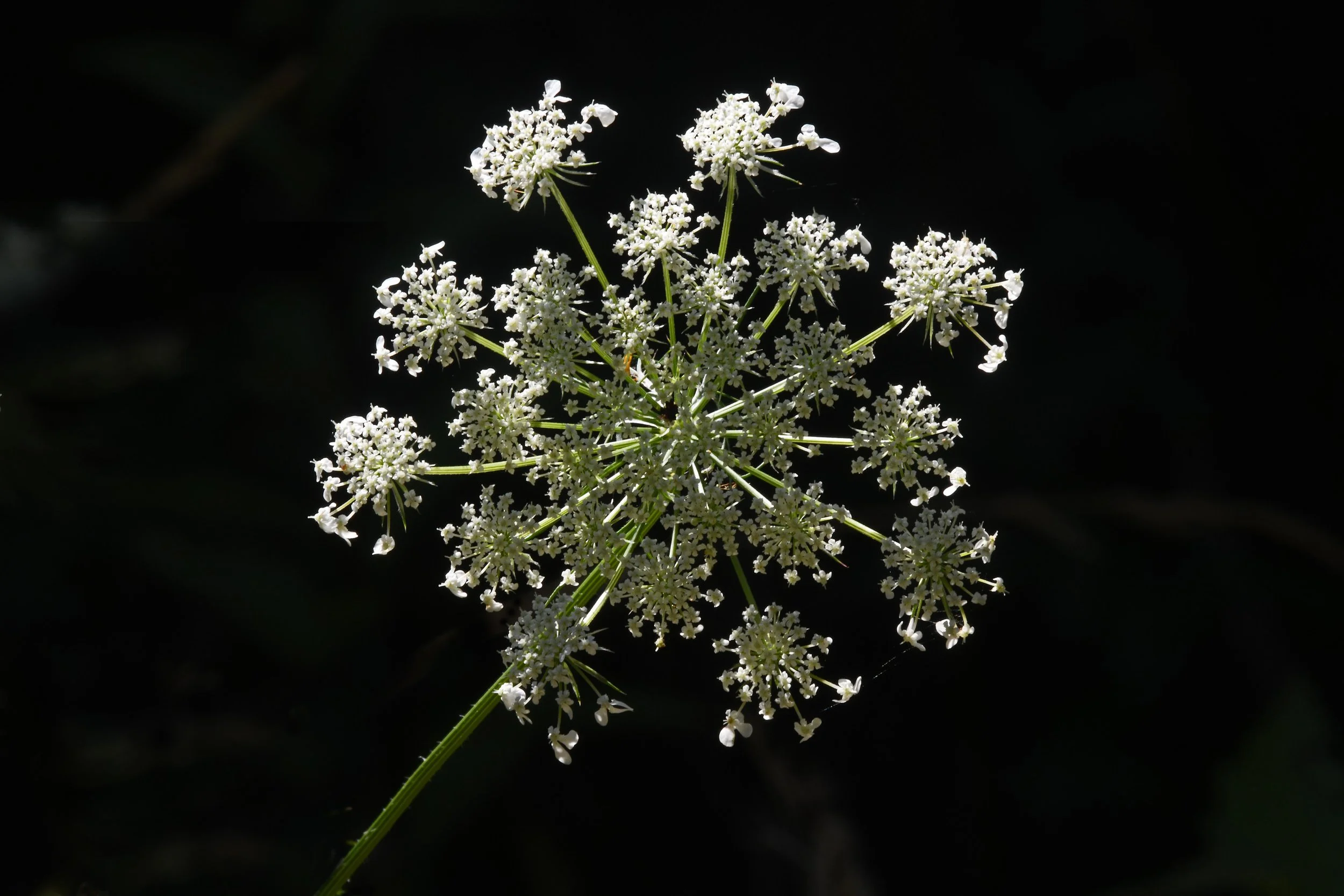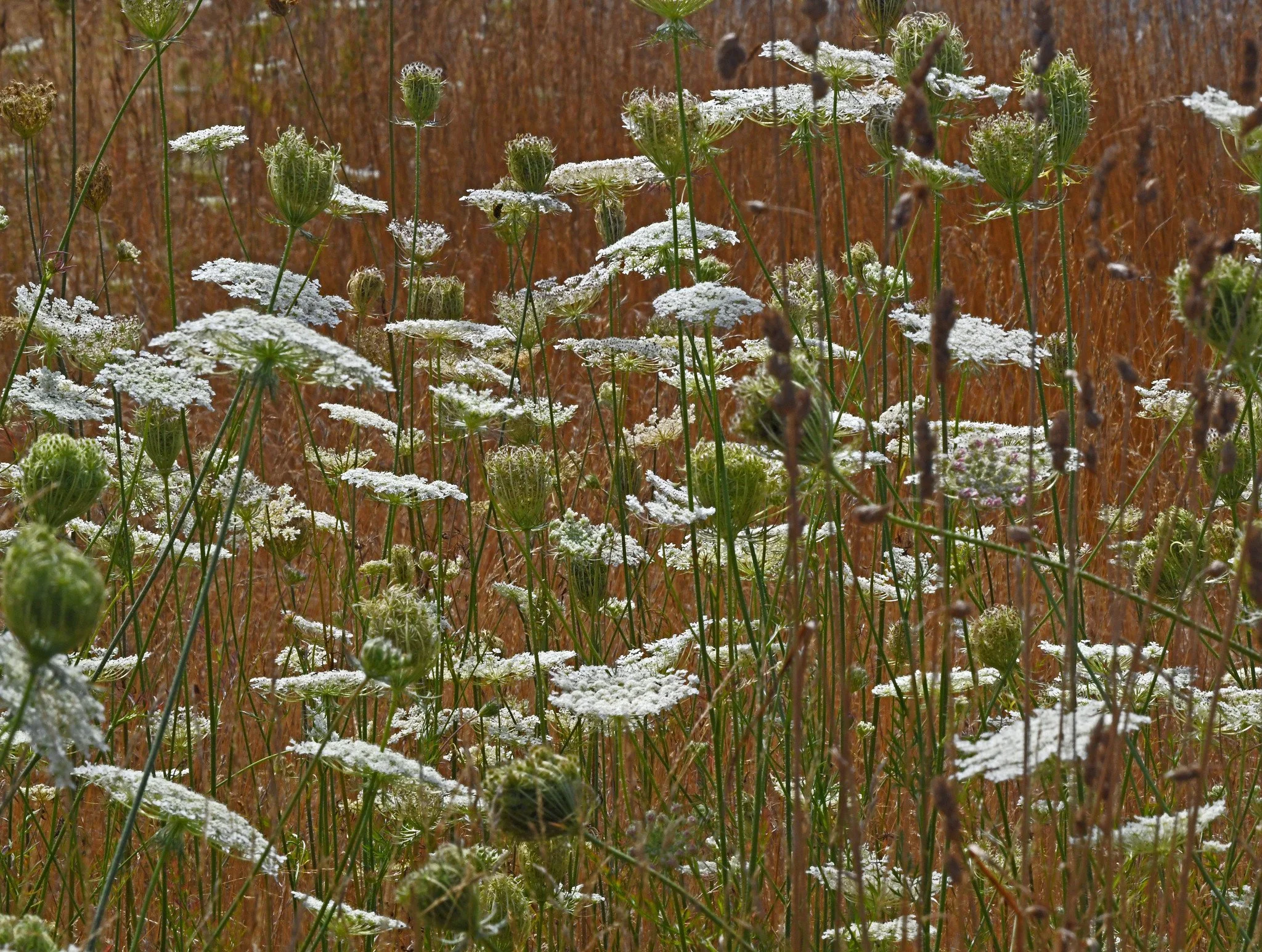Queen Anne’s lace is invading the browning fields as high summer starts to show signs of early fall. Individual flowers often look like celestial galaxies:
The usual fields of flowers, however, often look like the parachute drop behind Normandy beaches in World War II:
The plant’s scientific name, Daucus carota, hints at one of three other interesting common names for QAL. The first is “wild carrot” because it’s related to the domestic vegetable. The second is “bird’s nest flower” because its flowerhead stems sweep upward when growing out and look like a nest. And third, “bishop’s lace,” apparently because of its resemblance to the lace often worn (at least ages ago) by bishops performing religious rites.
But Queen Anne’s lace is its most popular name, a reference to the wife of King James I, who unified England and Scotland and has a Bible named after him instead of a flower. His pitiable wife Anne died in 1619 after having had at least 17 pregnancies in as many years and only one surviving child, according to the texts.
The various legends as to why this flower was named after Anne include the Queen usually wearing a lace headdress and her love of sewing lace. The most famous legend follows from the white flowers sometimes having a small red or purple floret at their center to attract pollinators. That spot is said to represent a drop of Anne’s blood that fell when she pricked her finger with a needle while sewing fine lace. I like to think that she shouted a very unroyal “Ouch!”
(Images taken in Brooklin, Maine, on August 18 and 19, 2025.)


